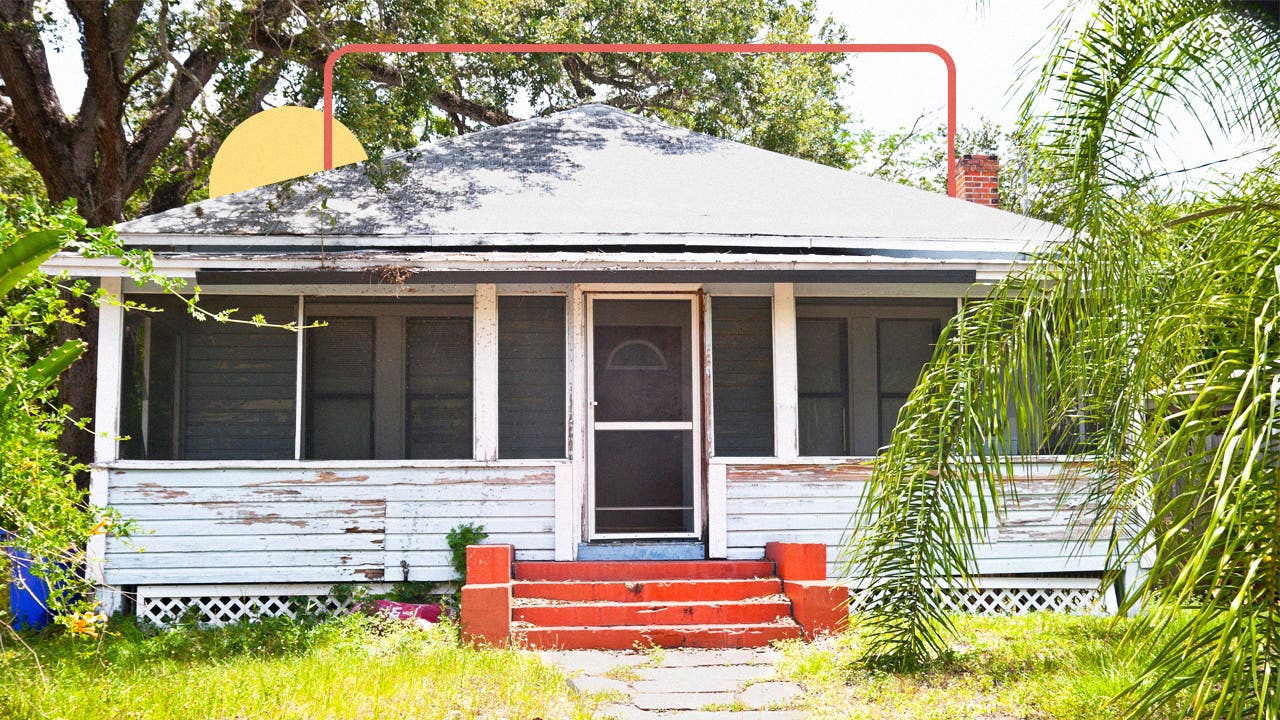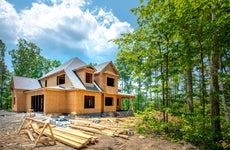High-risk homeowners insurance

The Bankrate promise
At Bankrate, we strive to help you make smarter financial decisions. To help readers understand how insurance affects their finances, we have licensed insurance professionals on staff who have spent a combined 47 years in the auto, home and life insurance industries. While we adhere to strict , this post may contain references to products from our partners. Here's an explanation of . Our content is backed by Coverage.com, LLC, a licensed entity (NPN: 19966249). For more information, please see our .
If you live in a home that’s considered high risk by insurance companies or your homeowner’s profile is viewed as high risk, securing homeowners insurance may take a bit more effort. Understanding the factors that constitute risk in the eyes of an insurance company, and how to address those issues is an important part of navigating the process of obtaining insurance. Knowing what options are available in such situations can also make a difference when securing high-risk homeowners insurance coverage for your home.
Key takeaways
- The characteristics of a home and a homeowner’s risk profile could cause an insurance company to consider a home high-risk.
- Understanding your home’s potential for risk could be helpful when looking for ways to mitigate or remove the likelihood of a claim.
- Even if your home is considered high-risk, there are steps you can take to obtain insurance coverage.
What is high-risk homeowners insurance?
When homeowners insurance companies evaluate a home’s potential risk, both the factors related to the home and the homeowner’s profile may be taken into consideration. Homeowners insurance companies typically have three main risk-related concerns: what type of loss or losses the house might face, the likelihood of the claim or claims and the associated costs. Greater possibility and higher costs of potential repairs are typically the factors that designate a home as high-risk.
Situations that can make you “high risk” for homeowners insurance
When completing a homeowners insurance quote, an insurance company may also assess a homeowner’s individual profile to determine their risk level. Some factors a company may consider include:
- Previous claims history: If you have filed a prior claim on any property insurance policy, your current carrier could use this to assess your risk level.
- Credit score: In states where credit score is an allowed rating factor for home insurance, insurance companies may use this to evaluate your risk.
- Home usage: This applies if the home will not be your primary residence. Homes that are primarily vacant, such as vacation homes, or homes that are used for business, like short-term rentals, generally have different risk factors than fully owner-occupied homes.
- Animals: Some insurance carriers may have a list of excluded dog breeds, while others may be more concerned about any dog with a history of biting or displaying dangerous tendencies. This could also apply to any animals in the home that are wild, exotic and non-domesticated with tendencies toward aggressive behaviors.
Factors that make a home high risk
Certain characteristics of a home, such as its location in a high-risk area or the home’s condition and type, could cause it to require high-risk home insurance. When evaluating a home, insurance companies may consider:
- High crime: Homes located in an area with a high crime rate could be seen as high-risk to insurance carriers.
- Risk of natural disasters: An insurance carrier may consider a home to be a high risk if it is in an area that typically has extreme weather, such as hurricanes, tornadoes or wildfires.
- Type of home: Trailers, manufactured and mobile homes, and registered historic homes may be classified as high-risk or denied coverage with a standard homeowners insurance policy.
- Condition: If a home is visibly lacking regular maintenance or over a certain age, an insurance carrier may consider it to be high risk.
These are only some of the most common factors that could make a home high risk. When purchasing a home insurance policy, an insurance inspector will typically visit the property to do an exterior inspection. If there are any concerns, the insurance company will provide that information to you and advise on any action that must be taken to continue coverage.
Why does it matter if your home is considered high risk by insurers?
If your home is considered a high risk by insurance companies, your homeowners insurance could be more expensive when compared to the average cost of home insurance. Maintaining high-risk homeowners insurance can be a significant financial expense over the course of owning your home. You may also have more difficulty finding insurance carriers willing to insure your home, especially without significant exclusions or policy limits.
Additionally, if you do need to file a claim when you have high-risk homeowners insurance, you may see a surcharge on your future premiums, making the insurance expense that much greater. The claim may also become part of your individual risk profile as a homeowner. When requesting new quotes from high-risk home insurance companies, your claims history and the amounts paid out may be factored into your rate.
States or regions that are considered high risk by insurers
While some natural disasters, like home fires and wind storms, are prevalent in regions across the United States, others are more common in certain regions. According to the Red Cross, the most common natural disasters in each geographic region of the United States include:
- West (Pacific): Earthquakes, wildfires, hurricanes (Hawaii), volcanoes, tsunami, landslides
- West (Mountain): Earthquakes, wildfires, winter storms
- Midwest: Tornadoes, earthquakes, wildfires
- South and Southeast: Tornadoes, landslides, earthquakes, hurricanes
- Mid-Atlantic and New England: hurricanes, winter storms
What to do if your home is high risk
As a high-risk homeowner, the first step is to assess the risk. Is it due to a factor related to your home or individual profile, and is it within your control to fix? In some cases, it may be. How you maintain your home is something that insurance companies evaluate. This includes clearing away any external debris outside of your home and repairing any major cracks or damages. You may also want to consider the age of your roof and evaluate whether it needs replacement, and decide whether or not you should update any electrical, plumbing and heating systems in your home.
However, some risks are outside of your control and, as such, you may need to find alternative ways to address the hurdles. When looking for high-risk homeowners insurance in these situations, some steps could include:
- Obtaining FAIR plan insurance: A Fair Access to Insurance Requirements plan, or FAIR plan, is a government insurance program intended for people who fail to find standard coverage in the private market. Homeowners who insure their homes via a FAIR Plan are typically not eligible for coverage through private insurers because their home is located in a high-risk area or there are other red-flags that concern insurers.
- Talk to your neighbors: If your home is located in a high-risk area, your neighbors may have an existing high-risk homeowners insurance policy for their home, as they may have dealt with similar issues. Learning which company insures the other homes in your neighborhood could give you an idea of the companies to request a quote from for your home.
- Speak to an independent licensed insurance agent: Working with a local agent with experience in your area may help connect you with carriers that specialize in high-risk homeowners insurance.
High-risk home insurance markets
Some places are simply considered high-risk markets to insure, and that reality is beyond your control as a homeowner. This is especially true as natural disasters like hurricanes, wildfires and catastrophic floods and tornadoes, increase in frequency across the country. Amid such challenges, home insurance rates are skyrocketing in some areas or insurance companies are pulling out of states or markets altogether.
With Florida’s frequent hurricanes, the Florida home insurance market has battled collapse as insurers flee the state. And Florida is not alone; additional states are considered to be high-risk markets due to the prevalence of various types of natural disasters or weather-related events. These include California, Texas, Mississippi, Louisiana and Oklahoma.
What’s more, a study published by Nature Climate Change indicates that flooding will be an increasing challenge in coming years, with Texas and Florida likely to experience as much as a 50 percent increase in flood risk by 2050.
Wildfires are another increasingly significant challenge. Since 1980, wildfires have been the fourth-most common disaster event according to the National Centers for Environmental Information, causing around $135 billion in damage. The wildfire risk is especially prevalent in western regions of the country and in California. After a string of catastrophic wildfires in the state, several insurers have stopped writing new home insurance policies in California altogether. Most recently State Farm and Allstate have announced that they will no longer accept applications for property insurance policies in California.
Frequently asked questions
-
-
While the components of a home insurance policy may be the same, an insurance company that specializes in high-risk home insurance may have its own add-on coverage options, limits and exclusions for dwelling and liability coverage as well as covered perils. Finding the best home insurance for a high-risk home may take a little bit more effort, but it can be done. Check with neighbors to see where they are insured. You may also want to consider working with an insurance agent who has the ability to find other solutions, like a private insurer that might insure your home.
-
Because a high-risk home is a unique situation, it can be very hard to provide an estimate of how much the annual premium might be. Still, the typical factors that impact the cost of home insurance, like location, size, materials and age, may all still apply. Shopping around and requesting quotes from more than one company will also give you an idea of what your home insurance premium range might be.
-
Home insurance claims may stay on your record for about seven years, but that’s just an estimate. It could be shorter or longer depending on a number of factors. All insurance companies have their own rules, so it’s best to check with your insurance agent or another company representative to find out the company’s policy regarding claims history.
-
A home may be considered high-risk if it is located in an area that experiences extreme weather events or natural disasters such as flooding, hurricanes, tornados or wildfires. A home might also be considered a high risk to insure if it is located in an area prone to high rates of vandalism, crime or theft. A property’s poor condition can also be cause for a high-risk label, including homes that require a great deal of maintenance.
-
Related Articles



